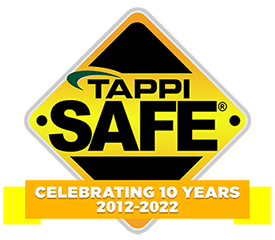 Search
Search
Use the search bar or filters below to find any TAPPI product or publication.
Filters
Content Type
Publications
Level of Knowledge
Collections
Journal articles

Magazine articles

Review of coating cracking and barrier integrity on paperboard substrates, TAPPI Journal November 2022
ABSTRACT: Barrier packaging formats are major growth areas for the pulp and paper industry. It is technically challenging to maintain barrier properties during converting and end-use applications. Improved manufacturing capabilities and coating formulation knowledge will help maintain barrier integrity and enable growth of barrier products in challenging applications. These improvements will accelerate product development and commercialization, and allow faster response to product performance issues such as cracking. The literature on coating cracking provides knowledge mostly on the effects of coating formulations and to a lesser extent on substrate effects. Despite a large number of publications dedicated to coating failures, the approach to improve coating cracking remains empirical, and the transferability between studies and to real life applications has not been well established. Model development that successfully predicts commercial performance is in its infancy. However, some of these simplified models do a fairly good job predicting experimental data. The current work reviews the state of understanding as regards coating and barrier cracking and highlights the need for more research on cracking and barrier integrity.
Journal articles

Magazine articles

Temperature profile measurement applications of moving webs and roll structures with intelligent roll embedded sensor technology, TAPPI Journal November 2021
ABSTRACT: An intelligent roll for sheet and roll cover temperature profiles is a mechatronic system consisting of a roll in a web handling machine that is also used as a transducer for sensing cross-machine direction (CD) profiles. The embedded temperature sensor strips are mounted under or inside the roll cover, covering the full width of the roll’s cross-dimensional length. The sensor system offers new opportunities for online temperature measurement through exceptional sensitivity and resolution, without adding external measurement devices. The measurement is contacting, making it free from various disturbances affecting non-contacting temperature measurements, and it can show the roll cover’s internal temperatures. This helps create applications that have been impossible with traditional technology, with opportunities for process control and condition monitoring. An application used for process analysis services without adding a roll cover is made with “iRoll Portable Temperature” by mounting the sensor on the shell in a helical arrangement with special taping. The iRoll Temperature sensors are used for various purposes, depending on the application. The two main targets are the online temperature profile measurement of the moving web and the monitoring of the roll covers’ internal temperatures. The online sheet temperature profile has its main utilization in optimizing moisture profiles and drying processes. This enables the removal of speed and runnability bottlenecks by detecting inadequate drying capacity across the sheet CD width, the monitoring condition of the drying equipment, the optimization of drying energy consumption, the prevention of unnecessary over-drying, the optimization of the float drying of coating colors, and the detection of reasons for moisture profile errors. This paper describes this novel technology and its use cases in the paper, board, and tissue industry, but the application can be extended to pulp drying and industries outside pulp and paper, such as the converting and manufacture of plastic films.
Journal articles

Magazine articles

Determining operating variables that impact internal fiber bonding using Wedge statistical analysis methods, TAPPI Journal November 2021
ABSTRACT: In this study, Wedge statistical analysis tools were used to collect, collate, clean up, plot, and analyze several years of operational data from a commercial paper machine. The z-direction tensile (ZDT) and Scott Bond tests were chosen as representative of fiber bond strength. After analyzing thousands of operational parameters, the ones with the most significant impact upon ZDT involved starch application method, starch penetration, and the amount of starch applied. Scott bond was found to be significantly impacted by formation and refining. Final calendering of the paper web has also shown an impact on internal fiber bonding.
Magazine articles

Practical sheeting and packaging methods for soho market, TAPPI JOURNAL, April 1999, Vol. 82(4)
Practical sheeting and packaging methods for soho market, TAPPI JOURNAL, April 1999, Vol. 82(4)
Journal articles

Magazine articles

Development of paper quality parameter measurement in China, TAPPI Journal May 2022
ABSTRACT: Paper quality parameters are important indicators of paper production, such as paper moisture, basis weight, ash content, strength, and so on. This study focuses on the online measurement methods and development of paper basis weight, moisture, and ash measuring. First, the measurable paper parameters and quality control system products in China are analyzed. Then, the basis weight measurement methods, accuracy, and development are given in the range of 10~1000 g/m2. Third, the distinction between infrared and microwave methods for moisture measurement is discussed. Finally, the ash measurement is introduced. Production and consumption of tissue paper in China have continually increased during the past decade. Near-infrared light technology is mature for the measurement of paper parameters in the range of 10~200 g/m2 basis weight. However, the near-infrared online measurement of tissue paper is not widely used, and few tissue paper lines are equipped with this type of quality control system in China. Therefore, technology for near-infrared measurement of basis weight has a great potential market in the field of tissue paper production. This article analyzes the future development trend of near-infrared light in tissue paper basis weight measurement and summarizes the difficulties in near-infrared light measurement of tissue paper basis weight.
Journal articles

Magazine articles

Can carbon capture be a new revenue opportunity for the pulp and paper sector?, TAPPI Journal August 2021
ABSTRACT: Transition towards carbon neutrality will require application of negative carbon emission technologies (NETs). This creates a new opportunity for the industry in the near future. The pulp and paper industry already utilizes vast amounts of biomass and produces large amounts of biogenic carbon dioxide. The industry is well poised for the use of bioenergy with carbon capture and storage (BECCS), which is considered as one of the key NETs. If the captured carbon dioxide can be used to manufacture green fuels to replace fossil ones, then this will generate a huge additional market where pulp and paper mills are on the front line. The objective of this study is to evaluate future trends and policies affecting the pulp and paper industry and to describe how a carbon neutral or carbon negative pulp and paper production process can be viable. Such policies include, as examples, price of carbon dioxide allowances or support for green fuel production and BECCS implementation. It is known that profitability differs depending on mill type, performance, energy efficiency, or carbon dioxide intensity. The results give fresh understanding on the potential for investing in negative emission technologies. Carbon capture or green fuel production can be economical with an emission trade system, depending on electricity price, green fuel price, negative emission credit, and a mill’s emission profile. However, feasibility does not seem to evidently correlate with the performance, technical age, or the measured efficiency of the mill.
Magazine articles

PIMA and tappi form alliance for paper industry education, TAPPI JOURNAL, February 1998, Vol. 81(2)
PIMA and tappi form alliance for paper industry education, TAPPI JOURNAL, February 1998, Vol. 81(2)
Magazine articles

Sheet hole and defect identification, TAPPI JOURNAL, May 2000, Vol. 83(5)
Sheet hole and defect identification, TAPPI JOURNAL, May 2000, Vol. 83(5)
Magazine articles

7th International symposium on corrosion in the pulp and paper industry, TAPPI JOURNAL, April 1993, Vol. 76(4)
7th International symposium on corrosion in the pulp and paper industry, TAPPI JOURNAL, April 1993, Vol. 76(4)
Magazine articles

Nonchlorine bleaching conference: the future is here, TAPPI JOURNAL, July 1992, Vol. 75(7)
Nonchlorine bleaching conference: the future is here, TAPPI JOURNAL, July 1992, Vol. 75(7)






